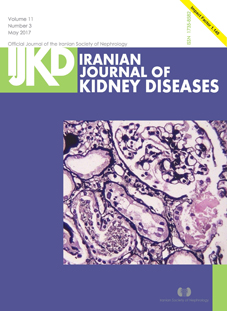Urinary Neutrophil Gelatinase-associated Lipocalin as a Biomarker of Kidney Injury in Hematologic-Oncologic Patients Receiving Amphotericin B
Abstract
Introduction. The aim of the present study was to compare the changing pattern of urine neutrophil gelatinase-associated lipocalin (NGAL) with serum as well as urine creatinine during amphotericin B treatment and determine its accuracy in the early detection of amphotericin B nephrotoxicity.
Materials and Methods. A cohort study was performed during 9 months at 3 hematology-oncology services. Patients aged 15 years and greater with no documented history of acute kidney injury or chronic kidney disease, planned to receive any formulation of amphotericin B for at least 1 week, were included. Serum as well as urine creatinine and urine NGAL were determined on days zero, 3, 5, 7, 10, and 14 of amphotericin B treatment.
Results. Forty patients with the mean age of 38.0 ± 14.1 years were recruited. Eleven of 40 patients (27.5%) developed amphotericin B nephrotoxicity. The overall changes in the mean values of urine NGAL were not significant during amphotericin B treatment, neither within nor between the two groups. The area under the curve of urine NGAL (0.765; 95% confidence interval, 0.588 to 0.962) on day zero was significantly higher than that of serum creatinine (0.464; 95% confidence interval, 0.268 to 0.660; P = .01) for predicting amphotericin nephrotoxicity.
Conclusions. The incremental pattern of urine NGAL during amphotericin B treatment was not significant compared to baseline values. The urine level of NGAL on the first day of amphotericin B administration was more accurate than serum creatinine in predicting acute kidney injury caused by this agent.


